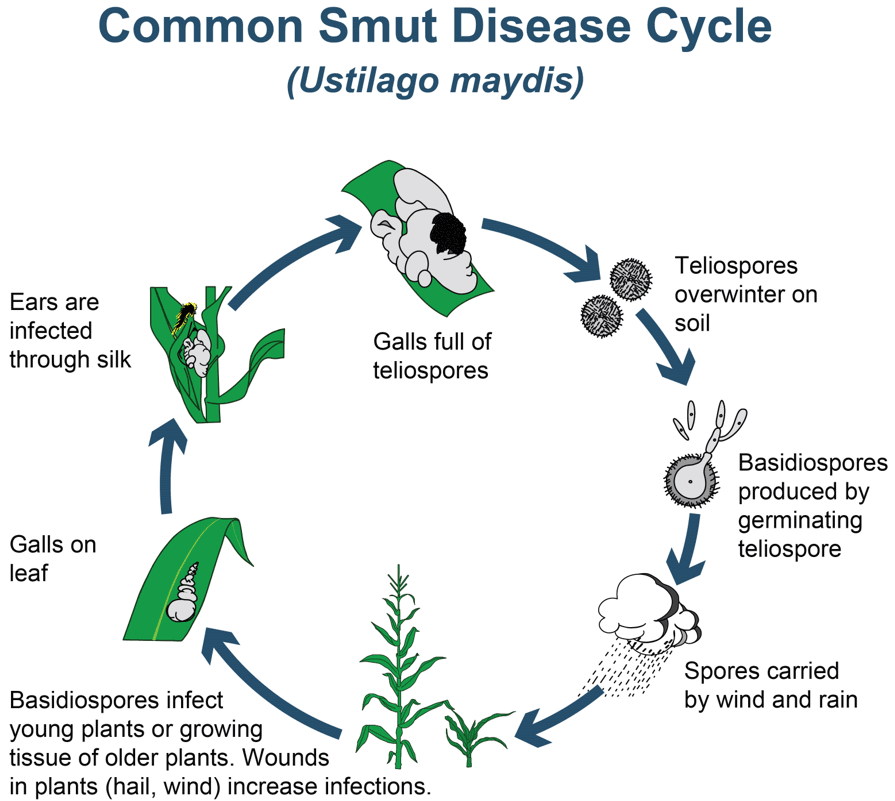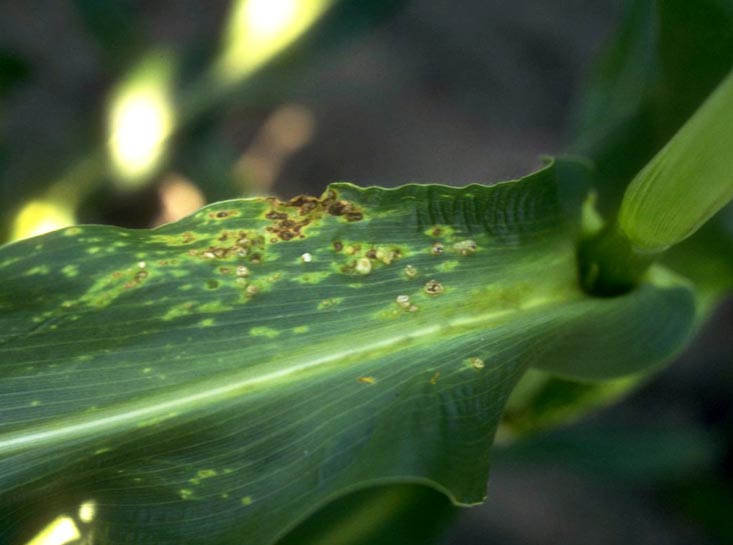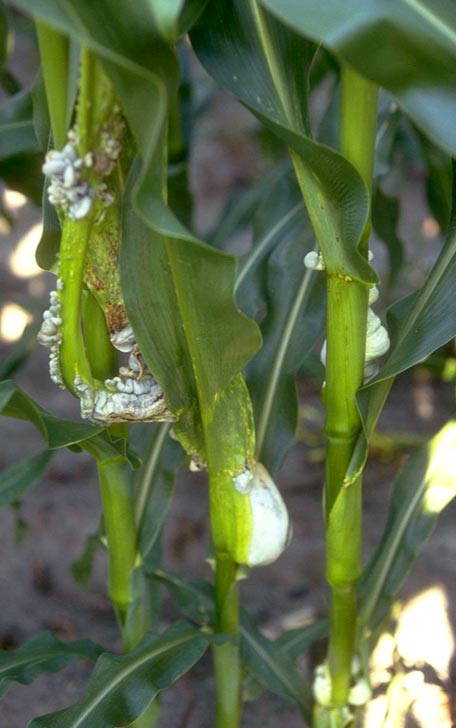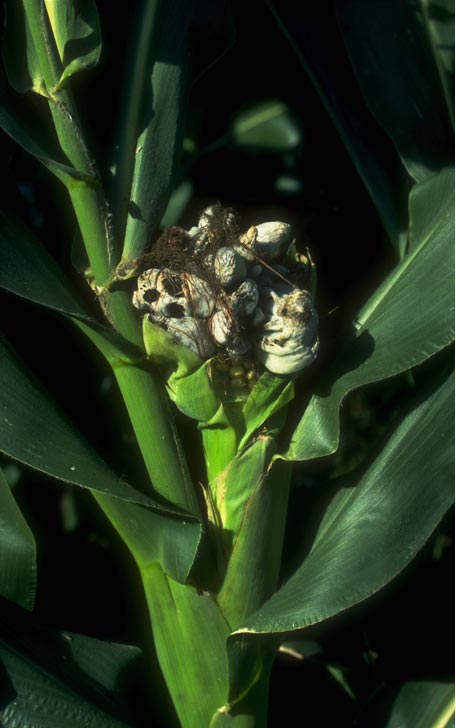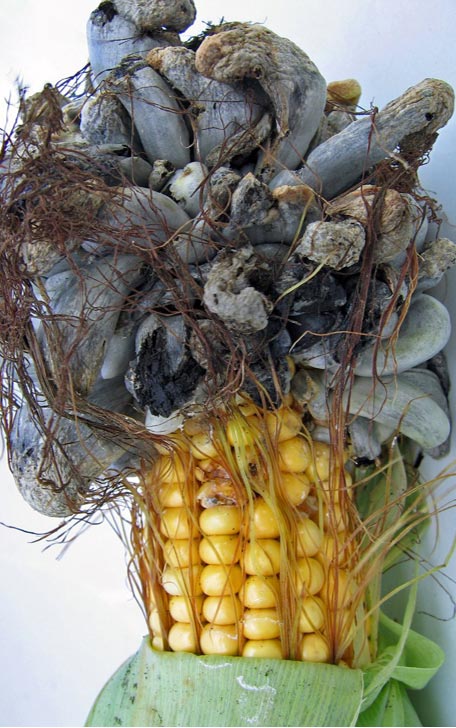Corn growing in soils with high levels of nitrogen and organic matter, for example barnyard manure, frequently shows more smut than corn growing in soils with well-balanced fertility. High levels of phosphorus tend to decrease infestation levels of common smut.
Most often infection takes place through wounds, which can be caused by sand blasting when winds are strong, insect bites, or mechanical injury at cultivation. Vigorously growing plants are most susceptible to wounding because the tissues are softer.
Breakdown of the surface tension of plant cells by the use of pesticides with surfactants can also create an opening for infection. Infection can occur in any tissue: leaves, stalk, ear or tassel (see Figures 1-5). Direct penetration without existing wounding has also been reported.
At flowering, silks may offer an entryway to the fungus if exposed for a longer period of time before pollination occurs. The fungus is capable of growing down through the silks into the developing kernels. This is often the case in very dry and hot conditions, when pollen delay occurs, or the pollen is not viable enough to ensure timely pollination and prompt separation of silks from newly formed kernels. In dry conditions it is often the tip of an ear that does not pollinate, so if those silks offer an entrance to the fungus, galls form on infected ear tips. (See Figure 5. This is characteristic of common smut but not head smut. Head smut infection typically does not allow any kernel development.)
